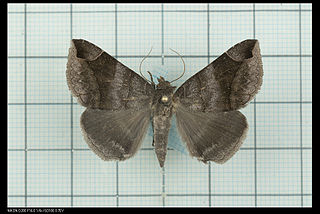Pseudomonas amygdali is a Gram-negative plant pathogenic bacterium. It is named after its ability to cause disease on almond trees. Different analyses, including 16S rRNA analysis, DNA-DNA hybridization, and MLST clearly placed P. amygdali in the P. syringae group together with the species Pseudomonas ficuserectae and Pseudomonas meliae, and 27 pathovars of Pseudomonas syringae/Pseudomonas savastanoi, constituting a single, well-defined phylogenetic group which should be considered as a single species. This phylogenetic group has not been formally named because of the lack of reliable means to differentiate it phenotypically from closely related species, and it is currently known as either genomospecies 2 or phylogroup 3. When it is formally named, the correct name for this new species should be Pseudomonas amygdali, which takes precedence over all the other names of taxa from this group, including Pseudomonas savastanoi, which is and inadequate and confusing name whose use is not recommended.

Heterodera avenae, the cereal cyst nematode or European cyst nematode, is a plant pathogen and an obligate parasite of cereal crops including barley, oats, wheat and rye. Cereal crops infected with this nematode are more susceptible to infection by fungal diseases such as rhizoctonia root rot.
Heterodera cruciferae is a plant pathogenic nematode that predates on cabbages.
Heterodera gambiensis is a plant pathogenic nematode affecting pearl millet.
Heterodera goettingiana, the pea cyst nematode, is a plant pathogenic nematode affecting peas.

Heterodera schachtii, the beet cyst eelworm or sugarbeet nematode, is a plant pathogenic nematode. It infects more than 200 different plants including economically important crops such as sugar beets, cabbage, broccoli, and radish. H. schachtii is found worldwide. Affected plants are marked by stunted growth, wilting, yellowing, decreased yields, and death. While there are many methods of control, crop rotation with non-susceptible plants is preferred.
Heterodera trifolii is a plant pathogenic nematode.
Heterodera aucklandica is a plant pathogenic nematode.
Cereal cyst nematode (CCN) is a plant pest caused by Heterodera avenae, Heterodera bifenestra, Heterodera hordecalis, Heterodera latipons, and Heterodera gotland in the following hosts: Avena sativa, Hordeum vulgare, Secale cereale, Triticum aestivum, and × Triticosecale.
Heterodera bergeniae is a plant pathogenic nematode in Pakistan.
Heterodera bifenestra is a plant pathogenic nematode, that is a causal agent of the cereal cyst nematode.
Heterodera canadensis is a plant pathogenic nematode.

Anguina is a genus of plant pathogenic nematodes.

Diaporthales is an order of sac fungi.

The Proceedings of the USSR Academy of Sciences was a Soviet journal that was dedicated to publishing original, academic research papers in physics, mathematics, chemistry, geology, and biology. It was first published in 1933 and ended in 1992 with volume 322, issue 3.

Bastilla is a genus of moths in the family Erebidae. The genus was described by Charles Swinhoe in 1918.

Bastilla amygdalis is a moth of the family Noctuidae. It is found in the Indian subregion, Sri Lanka, Taiwan, Thailand, Sumatra and Borneo.

Scolytus is a genus of bark beetles. It includes several species notorious for destroying trees in the forests. The Dutch elm disease is spread in North America by two species : the native elm bark beetle, Hylurgopinus rufipes, and the European elm bark beetle, Scolytus multistriatus. In Europe, while the aforementioned Scolytus multistriatus again acts as vector for infection, it is much less effective than the large elm bark beetle Scolytus scolytus.

Epicauta heterodera is a species of blister beetle in the family Meloidae. It is found in North America.








